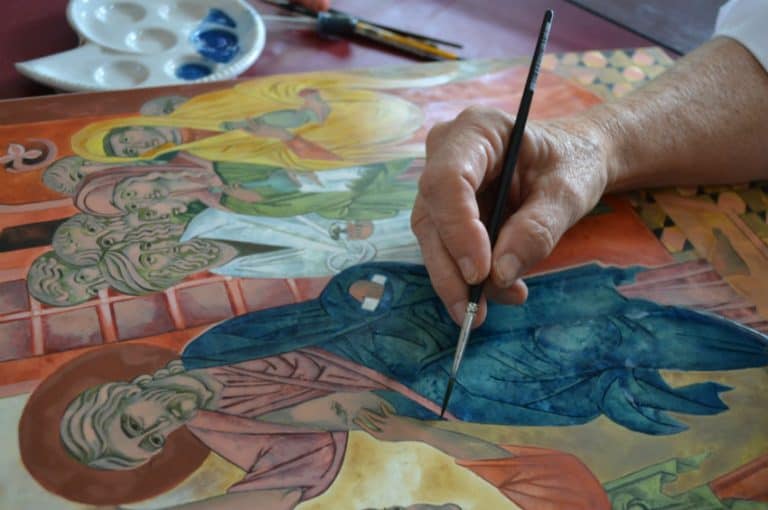Traditional Iconography
Here you'll find the work of women who create "true" icons as defined by the Orthodox Church. Traditional icons use the egg tempera method of painting that was devised by early iconographers. Egg tempera paint combines egg yolk, which represents the raw potential for life, with rare earth pigments that symbolise eternity and the divine. Successive layers of paint are applied to a flat board in a process known as "puddling" that allows the features of the subject to emerge through the materials that are used by the iconographer.

The iconographer paints from darkness to light in a manner that emulates the creation of the world from out of chaos. Following an opposite trajectory to modern artists, they begin with the shadows and then overlay the details of the subject's features and clothes through a series of successive highlights. These highlights have no external source of light because the subject dwells in an eternal world that is made up entirely of light.
The women in these pages draw inspiration from the icon's ability to facilitate encounters with divine subjects and early Christian artists. They are part of Christianity's most ancient school, and lineage, of painting.

